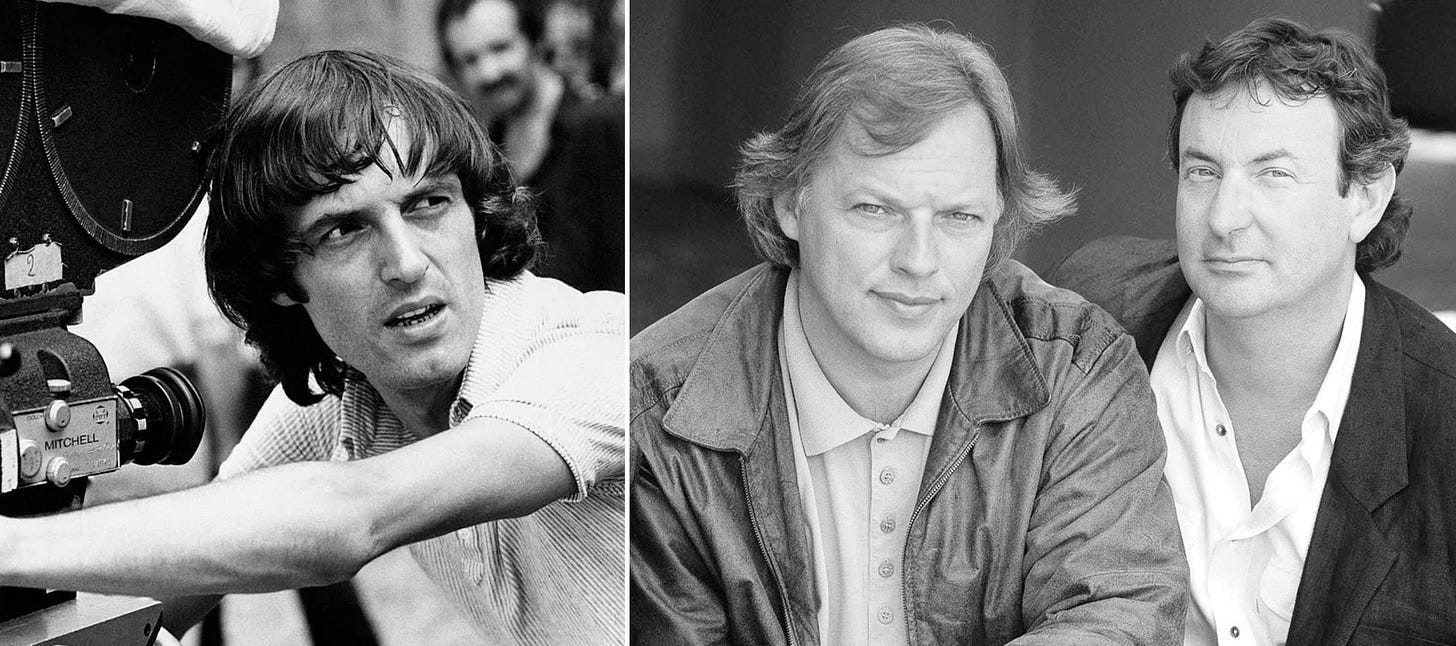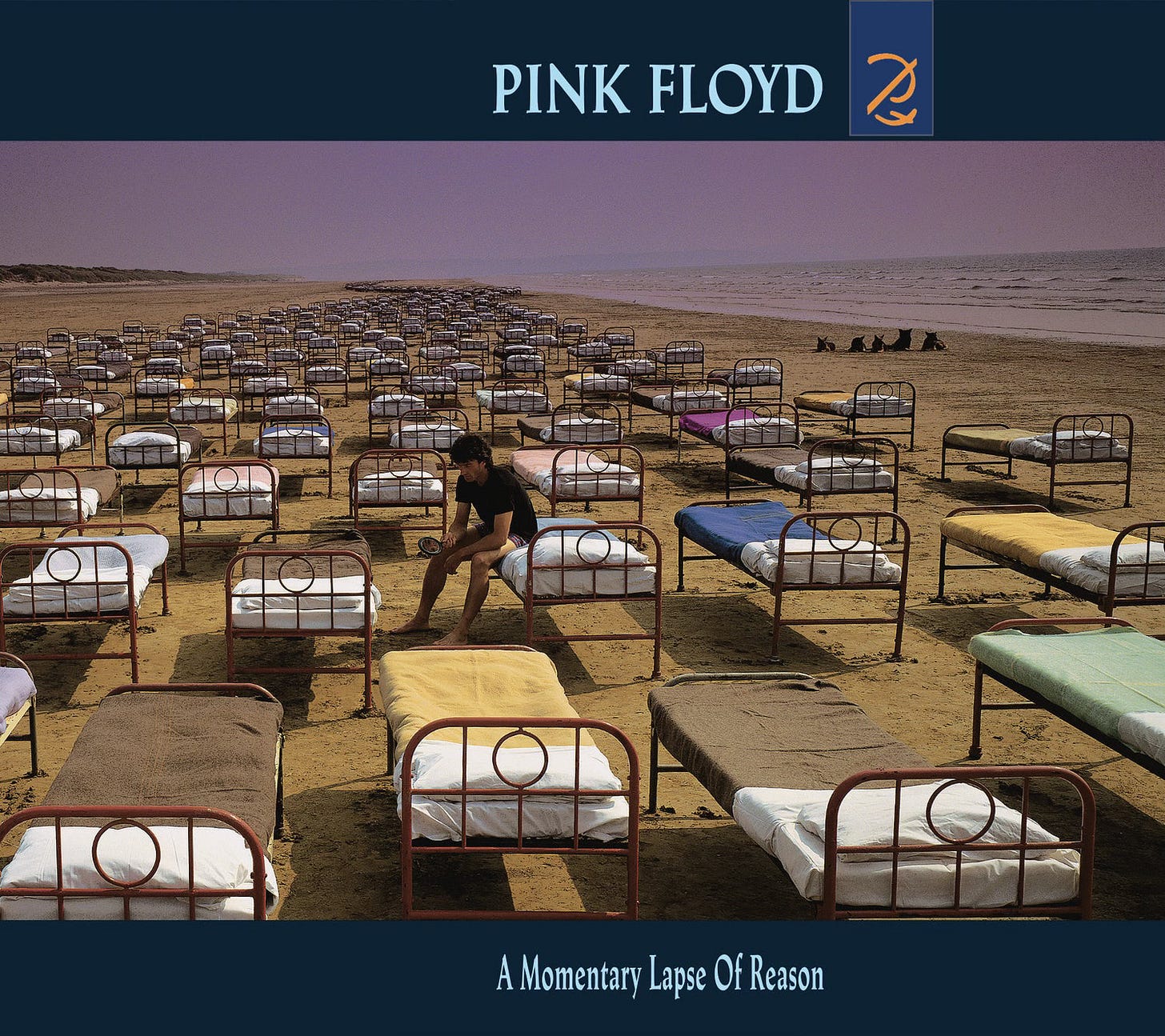The Embarrassing Wonder: Dario Argento interviews Pink Floyd (1987)
A forgotten 1987 interview: Gilmour and Mason of Pink Floyd go live with Dario Argento. Between odd questions, shaky translation and dry British humor, an awkward yet magical encounter emerges.
There are things that simply can’t be explained. Like those mornings when you wake up with a Pink Floyd song stuck in your head and the hazy memory of some late-night TV broadcast you once stumbled upon. Blurry, low-res, like a VHS tape long abandoned in a drawer. Then one day you find it online, and the absurdity hits you in the face: David Gilmour and Nick Mason live via satellite with Dario Argento. Yes, that Dario Argento. The director of Deep Red, asking otherworldly questions to two rock legends while an interpreter desperately tries to make sense of the impossible. Not a dream, not a meme. It really happened — in 1987.
To understand it, you have to rewind a bit. It’s the middle of the Floydian Cold War. Roger Waters has jumped ship, leaving behind enough frustration to sink the band twice over. Gilmour and Mason, stubborn as Welsh mules, refuse to call it quits. They scrape together what’s left and give birth to A Momentary Lapse of Reason — imperfect, but alive. They take it on tour before it’s even finished — a reckless move, but it works. Crowds respond, tickets vanish, and in the U.S. it becomes the rock tour of the year, even outselling Bowie’s extravagant Glass Spider Tour.
Meanwhile, in Italy, Dario Argento is at his most prolific and peculiar. Between films, he’s hosting his own TV segment: Gli incubi di Dario Argento (“Dario Argento’s Nightmares”). Nine eerie shorts aired within the show Giallo — all shadows, fake blood, and a dark fairy-godmother version of Coralina Cataldi-Tassoni. That same year, his film Opera fused visionary cinema with pure experimentation.
Argento has long claimed that back in 1975 he flew to London with a bold idea: to convince Pink Floyd to score Deep Red. According to him, the meeting really happened, full of mutual admiration… and nothing else. The band, he says, was too busy. Though, as with most Argento stories, the math doesn’t quite add up. “They were fans of mine, they knew my films, but at that time — very kind, of course — they were working on The Wall and preparing a film,” he told Italian radio in 2020. Small problem: in ’75 the Floyd were actually drowning in Wish You Were Here, not The Wall (which wouldn’t arrive until years later). A screenwriter would’ve marked that date with a big red pen.
No matter — history went to Goblin, who redefined Italian horror soundtracks with dark breaths, pounding rhythms, and haunted synths. Later, Keith Emerson scored Inferno, a technicolor symphonic delirium.
And so, here we are: that interview. A satellite link that now looks like it was shot on grainy 16mm. Gilmour and Mason in New York, probably between Madison Square Garden gigs; Argento in an Italian studio, glowing like a kid who just scored a vinyl copy of The Wall. The chat begins with compliments — A Momentary Lapse of Reason is called “wonderful.” Then it veers into a gray zone: broad, esoteric questions, translation stumbles, silence as the uninvited guest.
At one point, Argento asks: “What is your project for the world?” The musicians glance at each other, puzzled. The translation falters. A vague answer bounces back: “We’re just trying to make music, I’d say.” It lands like a broken pinball.
Then comes a gem. Argento, in his low theatrical voice, asks: “Do you have recurring nightmares?” For once, the translation works. Mason, with the dry British wit familiar from his memoir Inside Out, doesn’t hesitate: Roger — nicknamed “Stalin” at the time — returning to the band. The same Waters who would later claim he’d been bullied by his mates. Gilmour chuckles behind his moustache.
There’s even a detour into gothic cinema. Argento wants to know their thoughts. Gilmour tries but admits: “I don’t really know what that means.” And on film scores? “Not as gratifying as making your own albums,” he says. “You have to work with someone else’s emotions and images.” A thinly veiled jab, perhaps, at Michelangelo Antonioni and the troubled Zabriskie Point collaboration of 1970.
Antonioni had begged for Pink Floyd, but after long nights recording in Rome, the project soured. The band wanted to write a full original score, but ended up handing over existing material — including Careful With That Axe, Eugene, reborn as Come In Number 51, Your Time Is Up. Antonioni, unconvinced, leaned toward all-American sounds like the Grateful Dead. The Floyd felt like loud tourists at a seedy motel, calling the whole experience pure hell.
So yes, Argento added his usual flair. He and the Floyd orbited the same galaxy, rarely colliding but occasionally brushing close, gazing at each other across creative delirium. Worlds apart, yet for a fleeting moment, sharing the same awkward silence — where chaos and genius clasp hands without saying a word.
Watching that interview today is like pulling a forgotten letter from a drawer. It makes you smile, maybe even a little emotional. Above all, it reminds us of a time when television could still be surreal, skewed, poetic. When awkwardness wasn’t edited out but embraced. When even a botched translation could turn into art. If Roger Waters had tuned in, he might have slammed the set off. But for those of us who survived the ’80s with open ears and wide eyes, there’s a strange truth in that chaos. And maybe even a little magic.




